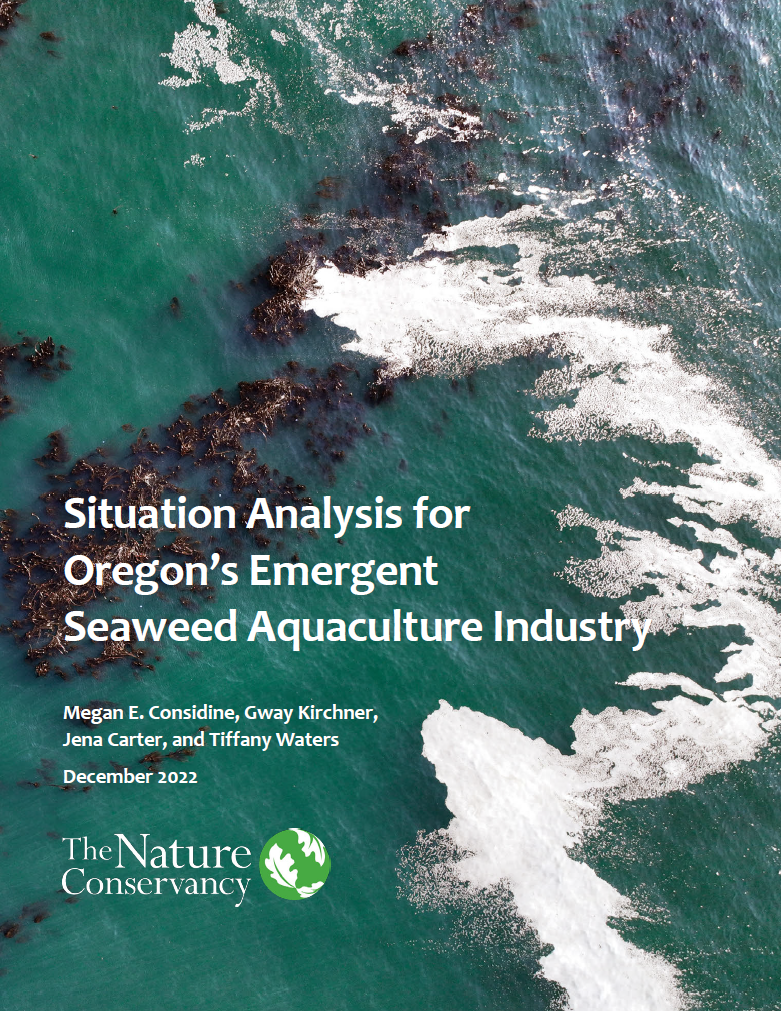Hello everyone!
My name is Morgan Oberman, and I am currently the Oregon Sea Grant 2025 Legislative Fellow for the Oregon Coastal Caucus. I began this fellowship earlier this year as I was completing my final semester of Law School at Lewis & Clark Law School in Portland. Before attending Law School, I graduated from the University of Hawaii at Manoa with a B.S. in Marine Biology. I am broadly interested in natural resource-based policy, especially policy affecting marine ecosystems and organisms.

For those who are unfamiliar, the Oregon Coastal Caucus is a bicameral and bipartisan group of Oregon state legislators representing Oregon’s coastal legislative districts. This means that the Coastal Caucus comprises legislators from both the Senate and the House of Representatives, including both Republican and Democratic members. Oregon has four coastal house districts—District 1, District 9, District 10, and District 32—and three coastal senate districts—District 1, District 5, and District 16. This session, the Chair of the Coastal Caucus is Representative David Gomberg (D, House District 10), and the Vice Chair is Senator David Brock Smith (R, Senate District 1). The other members of the Caucus are Senate Dick Anderson (R, Senate District 5), Senator Suzanne Weber (R, Senate District 16), Representative Boomer Wright (R, House District 1), Representative Court Boice (R, House District 9), and Representative Cyrus Javadi (R, House District 32). As the Coastal Caucus fellow, I provide technical assistance for the Coastal Caucus members, communicate with coastal constituents and key partners, and track important coastal legislation.
During this session, I have been tracking two important bills affecting Oregon’s marine ecosystems: HB 3587 and HB 3580. HB 3587 directs the Department of Land Conservation and Development (DLCD) and the Oregon Ocean Science Trust to take action to manage Oregon’s rocky habitats. HB 3580 establishes a task force to analyze research on Oregon’s eelgrass habitats and provide recommendations on how to best manage, protect, and enhance eelgrass habitats.
The Rocky Habitat Bill, HB 3587, directly provides funding to DLCD to develop management plans for rocky habitat sites identified in the Territorial Sea Plan. DLCD will then implement the management plans in collaboration with other state agencies, federally recognized tribes, and other key stakeholders. Furthermore, DLCD has been granted the authority to amend the Territorial Sea Plan, enabling it to adapt to future impacts on Oregon’s rocky habitats. The Bill additionally directs the Oregon Ocean Science Trust to create grants to implement non-regulatory rocky habitat management programs.
The Eelgrass Bill, HB 3580, creates the Task Force on Eelgrass Resources. The task force comprises a diverse group of at least nineteen members. The members of the task force include, but are not limited to, representatives of conservation groups, seafood industries, local governments, state agencies, tribal nations, and community stakeholders. The task force will identify current and historic seagrass habitat ranges and analyze existing laws and regulations to develop recommendations for protecting, managing, and enhancing eelgrass habitats. The task force can provide recommendations on both policy and regulation for a wide variety of topics that directly or indirectly affect eelgrass. The task force recommendations also include recommendations as to how to effectively monitor and enforce potential policies and regulations. The task force will collaborate with communities, industries, businesses, and other stakeholders impacted by the loss of eelgrass habitat to develop the most effective policy and regulation recommendations.
Currently, both bills are in the Joint Committee on Ways and Means, a bicameral committee that oversees and approves Oregon’s budget appropriations. Any bills with a fiscal impact are assigned to Ways and Means by the presiding officers of the House and the Senate (the Speaker of the House and the Senate President, respectively). The Ways and Means process in Oregon is somewhat complex because of how Oregon predicts its budget. Oregon has a State Economist who, every quarter, delivers a Financial Revenue Forecast to the legislature, which predicts what state revenues will likely be over the next biennium. Once the State Economist publishes the second-quarter revenue forecast during Oregon’s biannual budget-writing session, the Ways and Means co-chairs and the presiding officers begin to hold work sessions on legislative proposals with fiscal impacts. The revenue forecast for this year was released on May 14th. Typically, the Ways and Means Committee first determines state agency budgets and then proceeds to consider bills introduced by members of the legislature. Ways and Means has begun to consider agency budgets and some policy bills, but several agency budgets and most policy bills have yet to be evaluated by the Committee before they are sent to the House and Senate chambers for a vote of final passage.
The latest revenue forecast for this biennium is significantly lower than the last quarterly revenue forecast due to various economic factors, though revenues are expected to nominally increase over the previous biennium. This reduction in expected resources since the last quarter’s forecast, despite a nominal increase in total revenue, has resulted in tough deliberations over the funding levels of agency budgets as costs have escalated since the last biennium for the goods, services, and labor that state agencies rely on. Fewer bills than legislators hoped to get approved by Ways and Means will likely reach the Governor’s desk this session.
HB 3580 and HB 3587 are still very much “alive” for now, but they face a significant hurdle as the Ways and Means Committee determines how to prioritize available resources. Luckily, both bills have been widely popular, with bipartisan sponsors and near-unanimous support during public testimony, so there is still a good chance the bills will continue forward to a vote on the House and Senate floors after approval from Ways and Means.
I will be sure to post a follow-up update after the session ends by the end of June regarding the final fate of both bills.
Best,
Morgan





























